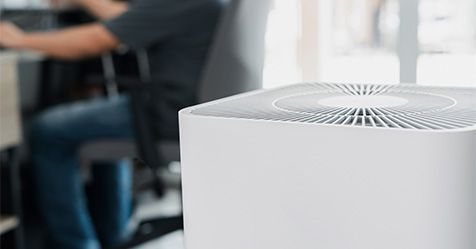Those in the professional cleaning industry often hear from clients that their facilities “look even better” after making the switch to a green cleaning program.
While customers may attribute this improvement to using green cleaning chemicals, janitorial service providers believe there’s something else going on.
The detailed training protocol that is a part of a comprehensive green cleaning program often results in cleaning staff learning new and more effective ways to perform tasks, leading to a cleaner, healthier facility overall.
This outcome demonstrates an idea that green cleaning advocates have been promoting for years: green cleaning means much more than just the use of environmentally preferable products; it involves proper green cleaning equipment, processes and procedures, communication and training as well.
In keeping with this view, Green Seal, a leading not-for-profit certification organization, has developed an industry standard for commercial and institutional cleaning services.
Green Seal designed this standard (GS-42) with the goal of protecting the health of janitorial workers, building occupants and the environment.
Service providers certified to the standard, including private cleaning companies and in-house custodial workers, have met specific, rigorous and science-based criteria that ensure cleaning excellence.
In addition, GS-42 calls for stringent oversight of cleaning operations after workers have completed the appropriate training.
The standard mandates follow-up visits by Green Seal, ensuring workers are continuing to perform the correct green cleaning procedures and processes as required by the standard.
In many ways, this operations review is similar to the periodic audits Green Seal performs to confirm that, for example, manufacturers continue to produce their green cleaning chemicals adhering to the criteria that originally earned the products their certification.
Along with detailing a very comprehensive training program, GS-42 also specifies that, to maintain compliance, certified professionals use only environmentally-preferable cleaning products.
Other requirements of the standard include, but are not limited to, the following.
Standard Operating Procedures.
All cleaning service providers must develop and maintain a set of written guidelines that govern all cleaning processes, chemical handling and tracking requirements, equipment maintenance, operational procedures and reporting and recordkeeping practices.
Building-Specific Green Cleaning Plans.
Cleaning service providers must create building-specific green cleaning plans that comprehensively describe the methods by which they will effectively clean a facility, while also protecting human health and the environment.
Floorcare Procedures.
Cleaning service providers must develop and implement a floor maintenance plan consistent with manufacturers’ maintenance recommendations.
This plan should extend the life of flooring through routine, periodic and restorative cleaning, with the goal of minimizing floor refinishing cycles, as refinishing is often the most environmentally harmful floorcare task.
Approved Equipment Selection.
Vacuum cleaners and carpet extraction equipment must meet the minimum approval standards of the Carpet and Rug Institute’s Seal of Approval program.
Training Considerations.
All cleaning workers must receive “best practices” training regarding the proper handling of chemicals, the proper use and maintenance of capital equipment and proper cleaning procedures.
Not only does this training help protect the health of the cleaning worker, but following green cleaning practices can also result in a significant reduction of indoor air pollutants when compared to using conventional cleaning processes.
Because the professional cleaning industry tends to have high employee turnover, the standard recognizes the importance of and requires the training on proper cleaning procedures for all new workers.
This training should include teaching the proper sequencing of cleaning steps and the proper use of personal protective equipment.
To comply with the standard, employers must provide this training before a new employee can begin work.
There are many benefits of GS-42.
Its primary goal is to protect the health of cleaning workers, building users and visitors, and the environment.
An added benefit is that workers following the standard may experience far fewer work-related injuries.
As for building owners and managers, the standard provides them with proof that a high level of cleaning is being met in their facilities.
For the cleaning staff, whether private or in-house, there is another advantage of great importance: increased professionalism.
Through the training required for compliance to the standard, Green Seal certification helps to raise the professionalism not only of the cleaning workers but the entire industry.
This increased professionalism may be why many managers believe their facilities look better once environmentally preferable cleaning products are in use.

